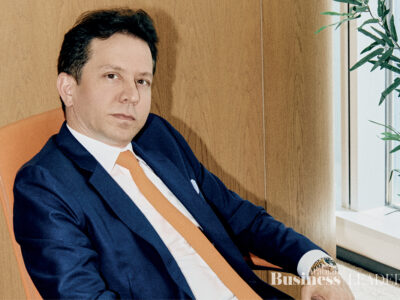“Let’s stop accepting job misery in return for job security.” So wrote Andre MacAskill, a LinkedIn Changemaker, in 2021.
For those of you who are not familiar with the quote, this is one of several messages being aired into homes across the UK several times per day, via primetime television as part of a LinkedIn advertisement series.
Here I invite you to take a moment to consider what that tells us about that shifting relationship between employees and employers? Seismic is the word that comes to mind.
The world’s leading careers platform has chosen one of the most powerful, far-reaching, and expensive advertising channels to inspire an entire workforce to take control. They must truly believe that this message is going to resonate with employees across the UK and that many will be inspired to make a change.
At this juncture I must acknowledge that to consider the misery vs security balance in one’s own job requires a degree of privilege. To then do something about it, requires a freedom, flexibility, and capability that many around the world do not have. For this I am both sad and sorry. However, I am confident that all, even the most marginalised, will eventually benefit from the rising tide of better work, which is without doubt gathering a swell. A swell so compelling, that LinkedIn have both bet on it and are fuelling it.
So, all this got me thinking, how do we articulate what’s changing in terms of the relationship between employees and employers to understand it better? As I have a background in marketing and branding, it will be no surprise that where I got to, is that employees have become the customers of our organisations and consumers of our jobs.
To succeed in this world, we need to think less like recruiters and HR personnel and more like marketeers and product designers. The more I thought this through, the more the analogy evolved.

Marketeers and product designers think in the following statements:
- We need to thoroughly understand who our target customers are and what they want and need.
- We need to find and attract the right target customers.
- We need to shape our products and services to meet the needs and desires of our target customers.
- We need to innovate new products and services before our target customers even realise, they want or need them.
- We need our target customers to engage with us and help shape our organisation to ensure we remain relevant and profitable.
- We need to develop unique selling points and values that resonate with our target customers and enable us to stand out and be noticed.
- We need our target customers to feel loyal to us and stick around for a long time.
- We need our target customers to be highly satisfied with their experience with us and recommend us to others.
- When the time is right, we may need to find new target customers to help us grow and diversify for longevity.
- Finally, we need to do all this better than our competitors.
Now replace the word ‘customers’ with the word ‘employees’ and read each statement again. See where I’m going?
At a time when there are more jobs than talent available to fill them, greater choice of employment options, more flexibility in the type of work available, as well as the terms upon how and from where that work can be delivered, greater access to entrepreneurship support, and a ‘War for Talent’ simply finding and hiring the right talent is proving to not only be very difficult but sometimes, impossible.
 Develop a communications strategy that builds a strong and authentic employer brand.
Develop a communications strategy that builds a strong and authentic employer brand.
In sales terms we have a supply and demand imbalance with the favour sitting with the suppliers (employees). When this happens marketeers and product designers must resonate, innovate, and generate;
- Resonate more with existing and potential customers (employees) by understanding them better
- Innovate products (jobs) and services (experiences and support) to serve their needs and desires more effectively
- Generate more demand for what it is that we must sell (jobs and career opportunities)
VPHRs in today’s environment should be looking to their colleagues in marketing and product design and/or suitable employee experience and brand consultants to help them to;
- Conduct market research on their existing and potential employees
- Target, segment and position them into groups with similar characteristics
- Design jobs, contract terms and employee experiences that meet their specific needs and desires
- Develop a communications strategy that builds a strong and authentic employer brand
- Create recruitment, onboarding, workplace, development, engagement and exit experiences that employees value and are proud to share and recommend
- Ensure all this is unique to your organisation and stands out from the crowd
It will then be necessary to embed all changes and create sustainable and effective systems for repeating them to a consistently high standard whilst simultaneously maintaining opportunities to constantly evolve and improve them as you learn new things or the context changes.
There is frequent debate about whether customers or employees should be the priority in any organisation. Yet, in a world where our employees are becoming our customers…it really makes one think. What does it mean to truly make our customers our priority, and what risks will we face if we don’t?





